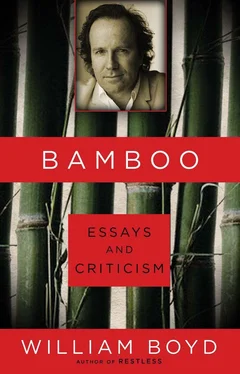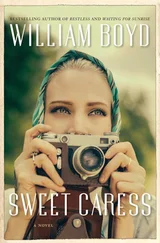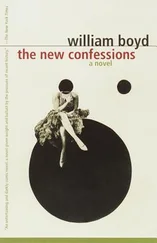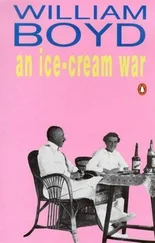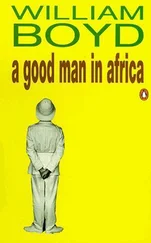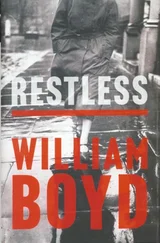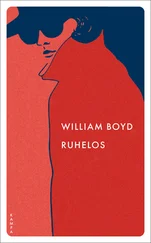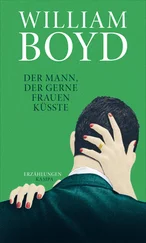Franz Kline was a modestly talented American artist, born in Pennsylvania in 1910, who up until the late 1940s was painting figuratively in a style of sombre neo-Impressionism. There is some dispute about the source of the influence that caused him to turn so dramatically to abstract painting (possibly de Kooning’s black and white abstracts of 1948, possibly Arshile Gorky’s work), but whatever it was the change in artistic direction was marked and memorable. The first indications of the new style occur in the late forties in a series of small ink on paper sketches, clearly done almost spontaneously, in a manner of slashed doodling, sometimes one or two strokes of the brush, sometimes more squiggly and cursive. The key word often employed here is “gestural,” and it is by and large apt, suggesting as it does the vague arm movements one might make in conversation, the way one might render visually with one’s hands the random geometry of a car crash. Kline’s early black and white sketches reproduce this sparse but effective vocabulary. If a spread palm-down hand juddering through the air delineates succinctly the idea of a car skidding to a halt, then the smear and spotting of ink on paper also has a stylistic validity: one is conjuring up, suggesting, implying — in the same way as a raised fist implies a more complicated act of violence.
But — and there is always a “but” with Kline, as there is with all the Abstract Expressionists — Kline’s work is both enhanced and betrayed by reproduction. On the page an 11 × 8 inch sketch such as Study for Buried Reds can assume the massive gravitas of Four Square , which is 6½ × 4½ feet. In the museum, however, a collection of sketches known as the “Telephone Page Series” turns out to be less than nugatory. Loose watery bands of black ink on torn out, yellowing pages of Manhattan’s telephone directory, they are nothing more than a tribute to the framer’s art. They are certainly beautifully framed.
Kline’s work needs the large scale in order for it to function in its singular, solid, charged way. Even medium-sized canvases such as Third Avenue don’t deliver the visual impact that the big pictures do, even though the ingredients and the manner of their execution are virtually identical. I don’t want to suggest that Kline’s work only succeeds by virtue of what one might term the skyscraper effect (a skyscraper is the same shape as an upended match box — which is the more impressive?), as there are other forces operating in addition to sheer size and graphic shock value, but I think that the disappointment, the banality, of the smaller work is due to the fact that the brushstroking is too evident. Too evident and too simple. The aleatoric dominates: one begins to think of the arrangement of volumes, of the painting’s design, as merely serendipitous rather than consciously artistic. In a huge painting like Wanamaker Block , although the effect is of, let’s say, a dozen great slashes on the canvas with a loaded housepainter’s brush, there must in fact have been carefully considered dozens more. The big canvases are more worked, in other words, the black derives its density from more thoughtful application than a simple backhand sweep or haphazard doodle. And so is the white, too. One of the pleasant revelations of the Kline show is to observe how different the whites can be: sometimes a thick impasto, or sometimes a watery shading with the canvas showing through. There is a distinct textural quality to a successful Kline that reproduction again does not convey.
One is searching for instances of the painterly in work that seems deliberately to shun such values. But it is significant that the black and white pictures are not simply a stark contrasting of opposites. The painterliness is again more evident when Kline begins to introduce small notes of colour. In pictures such as To Win or Lehigh V Span , the note of purply maroon in the former and small streaks of blue and pistachio green in the latter function ideally with the dominant black and white — minor chords that set off the major themes. Curiously — or perhaps significantly — the less monochrome the pictures become, the more Kline’s palette enlarges, the less memorable and effective they are. Kline’s large colour pictures — exactly as “gestural” and fervid as the black and white — seem mere angry discordancies. Pictures such as Yellow, Orange and Purple or Head for Saturn seem strangely un-Klinean, routine Abstract Expressionism exploiting some vague idea of energy or rage. Kline is a victim of his own success, a fate that often befalls abstract painters. Once your style is established and recognized (better still: if it can be recognized at fifty yards), then it is very hard to make a change. Kline’s black and white paintings are as much a signature of the New York School as Pollock’s luminous dribblings. Kline is not about colour in the same way that Pollock is not about draughtsmanship. To put it cruelly, they had both found their “gimmick” and that was what the world wanted of them.
Kline died in 1962, aged fifty-one, of a heart attack, having wilfully, perhaps deliberately, ignored doctors’ warnings to cut down his potent appetite for nicotine and alcohol. He was concentrating on colour in the last year or so of his life, wanting colour, as he phrased it, to behave structurally like black and white. It was a new direction, but, on the evidence of the works left behind, it might not have proved a fecund one. It is a measure of Kline’s gift, his singular talent, that with such a reduced vocabulary — black and white, the ragged brushstroke, and the limits these factors impose on form and composition — he was able to produce abstract paintings that are so memorable. (I was about to say “haunt,” but I feel that is a misnomer: let us say that some of Kline’s big simple paintings stay doggedly in the mind.) I think particularly of Thorpe, Yellow Square, Lehigh V Span, Wanamaker Block, Accent Grave and, to my mind his best painting, Hazelton .
What is it about Hazelton that makes it worthy of this distinction? It is large (41 × 78 inches) and the characteristic beamy slabs of black are painted with unusual confidence. There is less blurriness on the edges, less evidence of second thoughts or soft options, the black and white contrast is more austere, denser. It is also weighted heavily towards the right side, the volumes of black congregating in one half of the picture. One automatically scans a picture left to right, as one reads a book, the eye instinctively moves rightwards, and the massiness of the swathes of black in the right-hand segment seems gravid and packed, in powerful opposition to the two big white planes of the left-hand side, which are marred only by three or four tiny flecks. The flecks inevitably give a sense of scale, albeit arbitrary, small and scratchy beside the huge horizontal bar and the great tapered columnar vertical that almost divides the painting in half. There is an inevitable sense, too, of a horizon — a feeling that the top left rectangle of the picture recedes, is unpenned by the edge of the canvas.
Further comment becomes more subjective. The title of the painting suggests a place, the idea of a place implies a landscape, and one starts to imbue this dispersal of black and white pigment with attributes from our human world. Factors like “winter,” “woods,” “snowfields,” “sky” intrude, possibly all quite wrongly, as Kline claimed only to add his titles after the picture was painted as a means of identifying them, of distinguishing them from the mass of Untitleds that confuse critics and perplex curators. I feel this explanation is somewhat disingenuous as there is no doubt that calling a picture Wotan rather than Untitled 1957 inevitably adds something to the totality of response to that picture. Like it or not, one’s reaction to an abstract painting is always bound up with one’s human nature; it is virtually impossible (outside of an academic exercise) to confine it to the three essential judgements on colour, form and composition. People, human beings, who like art bring a whole complexity of sentiments — hard and soft, positive and negative — to the study of paint on canvas. By calling his picture Hazelton Kline slyly taps into that infinitely variegated richness, and thereby adds something to the picture’s greatness. It is naive, not to say dishonest, to pretend that it doesn’t matter.
Читать дальше
